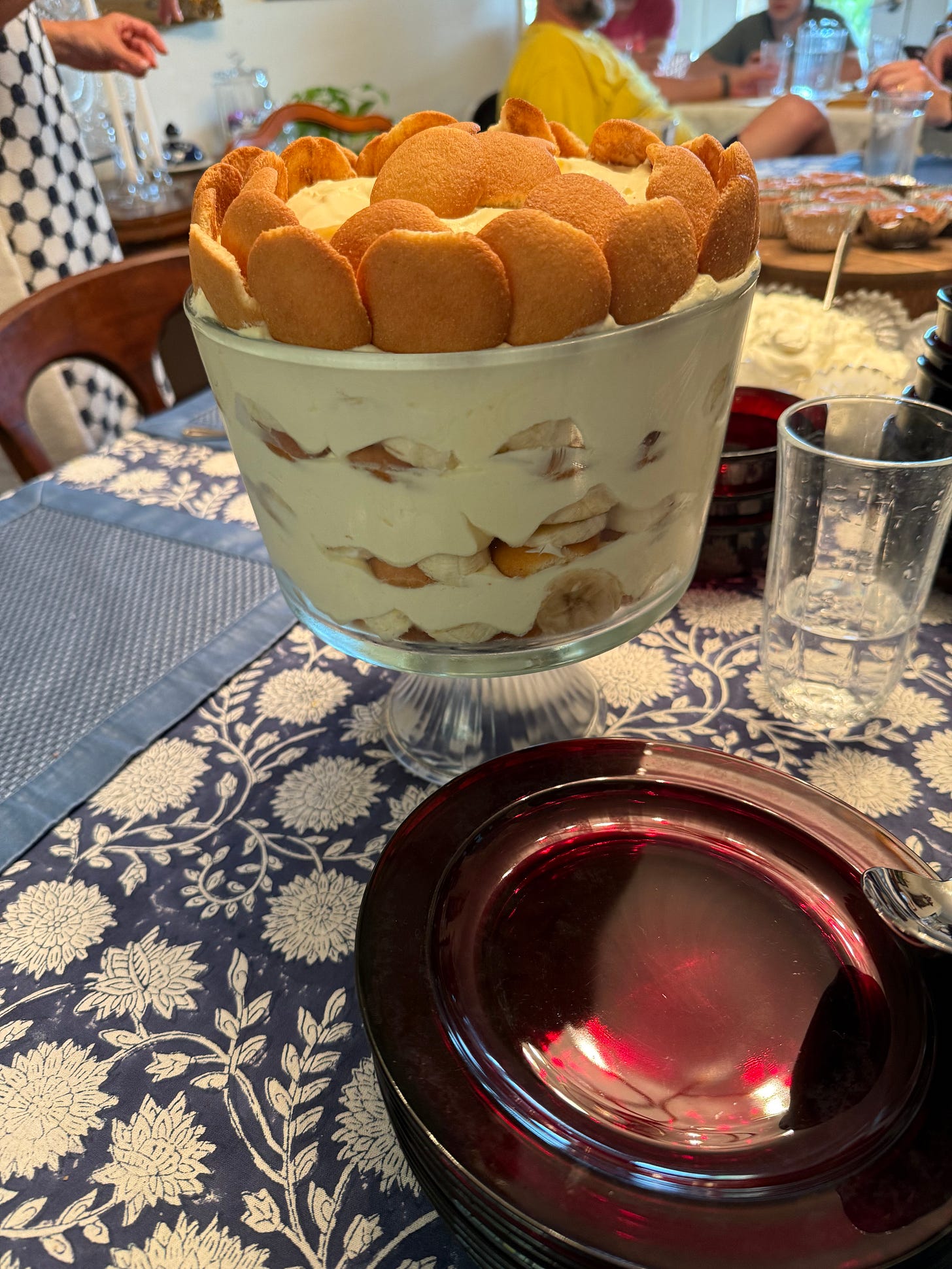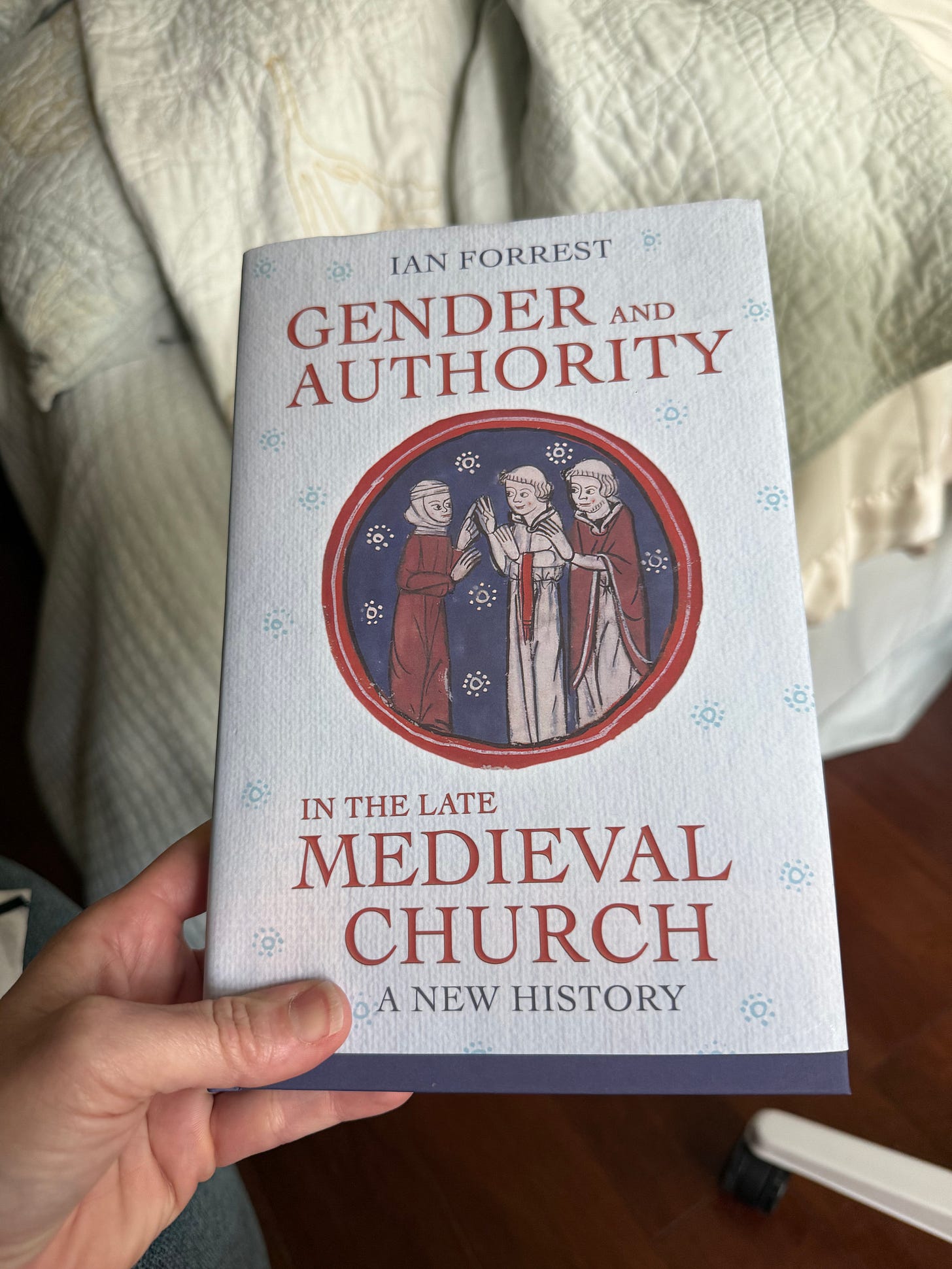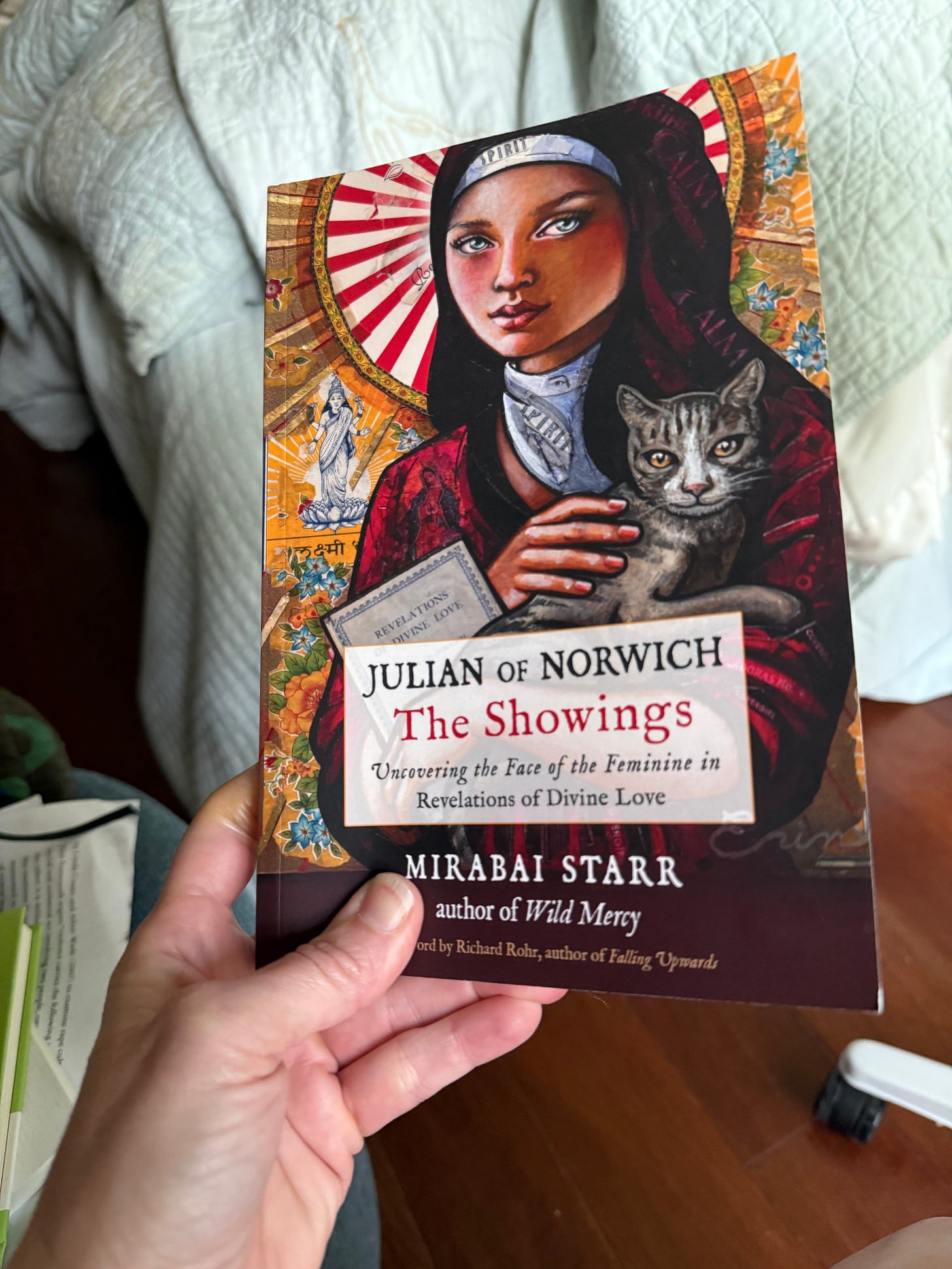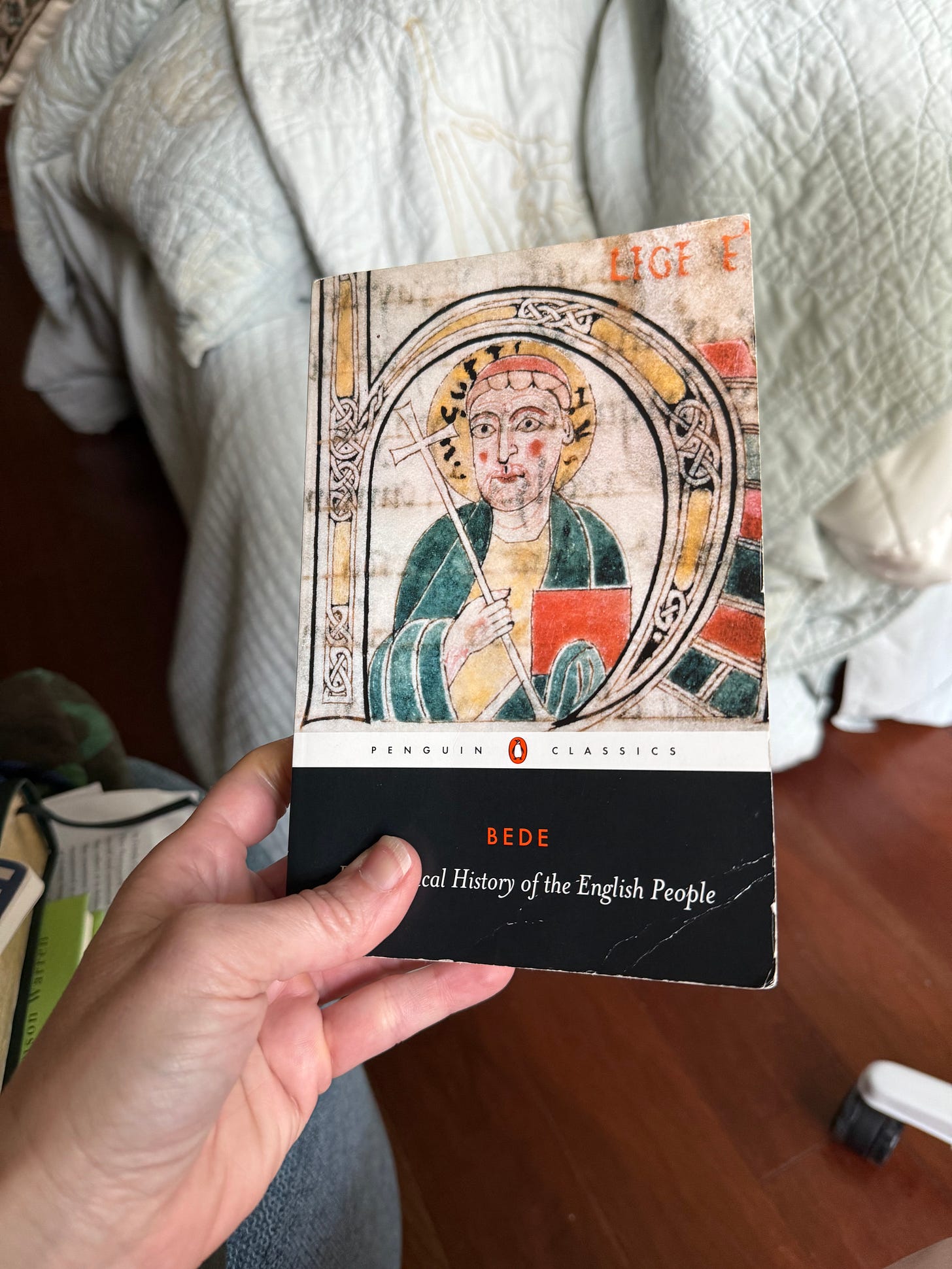*for those counting typos, I just caught them.
As always, I have so much to say that I need to just start writing again.
I’m not quite ready to talk about the SBC.
I’m not quite ready to share what I learned in the Dorothy Patterson archives which strengthen my argument in Becoming the Pastor’s Wife. Let me just say it is a good thing I didn’t get into her papers at the Harvard Radcliffe Institute’s Schlesinger Library until after I finished the book. Otherwise, it might have become significantly longer!
I’m grateful for
’s voice saying what needs to be said in this time of increasing political and religious chaos. I read her posts and think, yes, exactly that!, so I will leave those for you to read, too.Because I am leaving tomorrow for New Mexico (my favorite state, truth-be-told)— looking forward to a few days of writing in the mountain air—I thought I would share with you some books I am bringing along. The new writing project is my third book with Brazos Press. I decided to write the book mostly closely connected with The Making of Biblical Womanhood first. Becoming the Pastor’s Wife isn’t exactly a sequel, but it fills in a glaring hole left from my first book (the history of women’s ordination) and traces the stunning (and very recent) rise of the pastors’ wife role, showing how it was coopted in the evangelical world to become the poster child for complementarian theology. I am really grateful I had the chance to write Becoming. It tells a history that few know; a history with far-reaching consequences for both women and the North American evangelical world. If you haven’t read it yet, check out
review in Christianity Today and pick up a copy at your local bookstore.My third book is different. I don’t want to say too much yet, but it is firmly set in the medieval world (with spillages from the classical world and 16th century). And I am smiling just writing that sentence.
Here are three of the books in my research pile for my third (and final, at least for the time being) public scholarship book. I’ve added a sentence or two about each (or from each) to peak your interest. BTW, these are books I recommend. I have a lot in my reading pile that I don’t recommend, either………
Ian Forrest, Gender and Authority in the Late Medieval Church: A New History. Cornell: 2025.
This book is a superb companion to Gary Macy’s The Hidden History of Medieval Women’s Ordination. It is a superb book for those interested in a how the medieval priesthood became a “male-only preserve” and how medieval women continuously challenged it. I think it is perhaps the most important work of scholarship written on medieval women and the gendered construction of male ecclesiastical power. Just to give you a taste:
“Women were everywhere active in shadowing, pressurizing, urssurping, or adopting positions of influence and authority within the [medieval] church, demonstrating their capacity to undertake roles that were gendered masculine. Heads of female religious houses possessed the skills and experience to take part in extensive church government, many lay women were hugely influential on the operation of parishes and priests’ households, some lay women possessed both the theoretical and pragmatic capacity to step into roles reserved for ordained clergy when circumstances allowed…Women’s action in masculine gendered roles was contained, suppressed, denied, and—where possible—ignored.” It was a ‘hidden transcript’ of power” that haunted “the official transcript of power” that lay uneasily in the hands of men. (248)
I confess I was pleased to see a reference to me, too: “for a discussion of female ministry in Evangelical churches, written with strong historical context by a medievalist scholar, see Beth Allison Barr, The Making of Biblical Womanhood: How the Subjugation of Women Became Gospel Truth.” I didn’t write MBW for my academic peers, but it is still gratifying to see my academic peers recognize my public scholarship.
Miriabai Starr, Julian of Norwich: The Showings, Uncovering the Face of the Feminine in Revelations of Divine Love. Hampton Roads Publishing Co., Charlottesville, VA: 2022.
“This beautiful word ‘mother’ is so sweet and kind in itself that it cannot be attributed to anyone but God,” Julian of Norwich.
Richard Rohr opens his foreword to Starr’s new, modernized translation of Julian with this quote from Julian herself. He continues, “I would go so far to say that the reason most religions in the last millennia overdid the notion of God as male is perhaps to overcompensate for what was almost too obvious: God is, in essence, like a good mother,” (x-xi). Julian of Norwich is name many evangelicals know; some might even know how associated she is with the feminine face of God. But few understand how normative was her late medieval understanding of God as mother—a theme I am tackling in my next book. I picked up Starr’s translation with hopes for its accessibility to a broader public as well as her emphasis on Julian’s gender theology. I was not disappointed on either count.
In Starr’s words: “What does Julian of Norwich, a fourteenth-century Catholic anchoress, who spent the majority of her adult life cloistered in a small stone cell attached to a church, have to teach us here and now? She reveals the feminine face of the Divine in all its radiance and reminds us to seek God there. She teaches us that God’s love has nothing to do with rules and retribution and everything to do with mercy and compassion. She shows us that our failings and transgressions are simply an opportunity to learn and grow, and should be honored as such, but not dwelled upon. She translates the sorrows of this life as tastes of Christ’s passion and assures us that all passing pain will be transmuted into endless joy.” (xxi)
The Venerable Bede, Ecclesiastical History of the English People. Penguin Classics, 1990 printing.
Honestly, if people would just read Bede instead of the church history article in Recovering Biblical Manhood and Womanhood (with the title I can never forget and laugh about every time I see it—”Learned and Holy, But Not Pastors”), it would make my life a lot easier. Honestly, reading Bede will shame contemporary authors of church history textbooks that still consistently leave women out of the narrative—Bede, who died in 735 A.D., discusses more than 40 women by name in his church history. Just do yourself a favor and pick up a copy.
Happy Reading!








I identify far too much with your opening line about typos 😆. Also, I just picked up a book titled The Once and Future Sex: Going Medieval on Women’s Roles in Society by Eleanor Jenega. Looks fun and witty.
Confession: I've never found the medieval era all that interesting, but the more I hear from you about it, the more I'm curious about what I've been missing out! My lack of knowledge on it is probably due to typical fundy-evangelical overemphasis on American History in the Christian schools I attended (and the curriculum my parents picked when I was homeschooled). And of course, they tended only to aspects convenient to their specific agendas and worldviews. ahem. :)
So, thanks for helping me fill in some gaps!